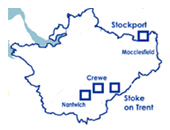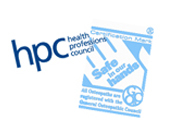Hamstring Injury
The hamstrings are three muscles located on the back of the upper thigh namely, semimembranosus, semitendinosus, biceps femoris. Hamstring injuries are a common source of injury in sports people. Most injuries are at the top part of the muscle group and can vary in severity from mild strain to complete tear.
Sprains and strains are caused by excessive over stretching of muscle fibres. Hamstring strains are classified as primary (mild), secondary (moderate), or 3rd (severe) strains depending on the severity.
Pain is usually sudden at the start of running, particularly quickly and may be associated with a popping sound. Most occur at the start or nearer the end of exercise sessions.
It can hurt you to walk up or down stairs and can be sore sitting. It will hurt when the muscle group is used against resistance.
Bruising can be present the day after injury, the bruise begins in the back of the thigh, and spreads down below the knee and often into the calf.
Swelling The blood build up from the hamstring injury causes swelling of the thigh, making muscle contraction difficult and painful.
Spasm of the muscle group is a common and painful symptom of the injury.
Most injuries are thought to be due to poor warm-up, stiffness in the back knees or hips, tiredness and mechanical imbalance. Leg Length Differences. A shorter leg may have tighter hamstrings which are more likely to strain.
Hamstring injuries can often recur which is why it is important for your Osteopath to discover the initial reason for your injury.
It is important to have your injury assessed quickly as after several days most patients may begin specific exercises.
Prevention
Warm up thoroughly. This is probably the most important muscle group to warm-up and stretch before exercise.
Stretching after exercise may also be helpful.
Other ways to prevent injury are to avoid overdoing it, don't push your boundaries too soon, and take it easy if you are tired.
Most athletes can return to their sport when the hamstring is at least 90% the strength of the uninjured side, but exercise to prevent recurrence is essential..
Recovery is usually good for minor strains but rapid referral is best to facilitate quicker recovery.
See your Osteopath quickly!


